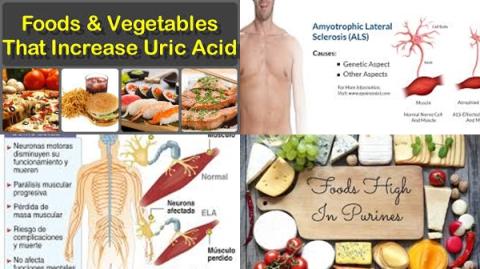
Objectives:
The pathogenic mechanism of ALS remains unclear. However, increasing evidence has indicated that uric acid (UA) may play a protective role in the pathogenesis of ALS. Therefore, this meta-analysis (systematic review) has been conducted.
Does uric acid play a protective role in the pathogenesis of ALS?
Study design:
This review article included 8 case-control studies with a total of 1,168 patients with ALS and 1,391 healthy controls (persons without ALS) and 3 cohort studies included 3,190 ALS patients.
The NOS score ranged from 6 to 8 points in these studies, suggesting that these studies were of moderate to high quality.
Egger’s test did not indicate significant publication bias [p = 0.506].
Results and conclusions:
The investigators found in case-control studies that serum uric acid level was significantly lower in ALS patients compared to control subjects [SMD = -0.72, 95% CI = -0.98 to -0.46, p 0.001, I2 = 87.6%, p 0.001], based on random-effects model. Sensitivity analysis demonstrated that the pooled SMD was stable after omitting each study, which suggested that the results were reliable and robust.
The investigators found in cohort studies that higher serum uric acid levels were associated with a significantly decreased all-cause mortality risk of 30% among ALS patients [top vs. bottom tertile RR = 0.70, 95% CI = 0.57 to 0.87, p = 0.001], based on fixed-effects model. Sensitivity analysis indicated that the pooled RR was stable after omitting each study.
The investigators concluded that there is an inverse association between serum uric acid levels and risk of death among ALS patients. Uric acid plays a protective role in ALS. Well-designed randomized controlled trials are required to assess the therapeutic effect of uric acid on ALS.
Original title:
Serum uric acid levels in patients with amyotrophic lateral sclerosis: a meta-analysis by Zhang F, Zhang Q, [...], Chen X.
Link:
https://www.ncbi.nlm.nih.gov/pmc/articles/PMC5773600/
Additional information of El Mondo:
Find more information/studies on chronic diseases right here.
Uric acid is produced from the natural breakdown of your body's cells and from the purine-rich foods you eat. Most of your uric acid (about two-thirds) is produced by your body naturally. The rest comes from your diet, often in the form of purines. Purines are substances in animal and plant foods that your body converts into uric acid. Thus, purine-rich foods can increase serum uric acid level. However, too much uric acid (>6 mg/dL) in your body will cause gout.
|
Purine-rich foods are: |
|
|
Food items |
Purine content |
|
100g of beef |
110 mg |
|
100g of lobster |
118 mg |
|
100g of lentils |
127 mg |
|
100g of ham |
131 mg |
|
100g of duck meat |
138 mg |
|
1 serving of sunflower seeds |
143 mg |
|
100g of shrimps |
147 mg |
|
100g of turkey |
150 mg |
|
100g of veal |
170 mg |
|
100g of mussels |
172 mg |
|
1 serving of chicken |
175 mg |
|
100g of lamb |
182 mg |
|
100g of organ meat |
444 to 773 mg |
|
100g of sardines |
480 mg |